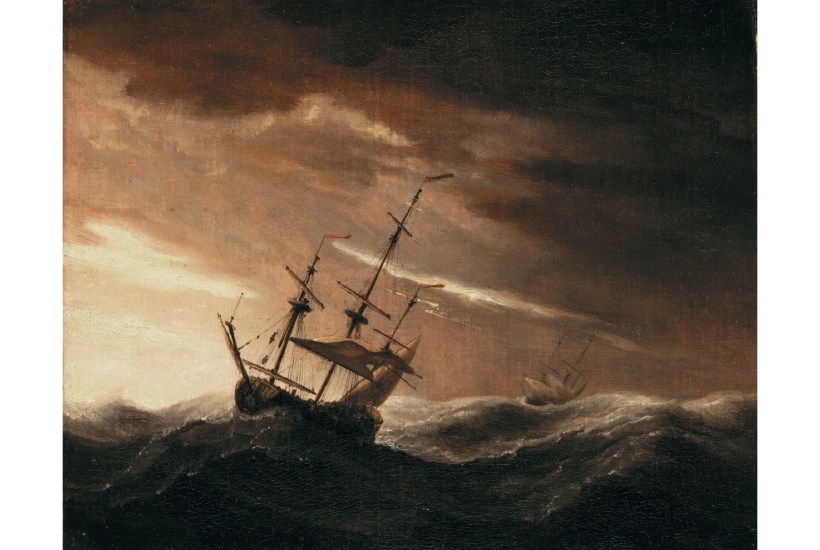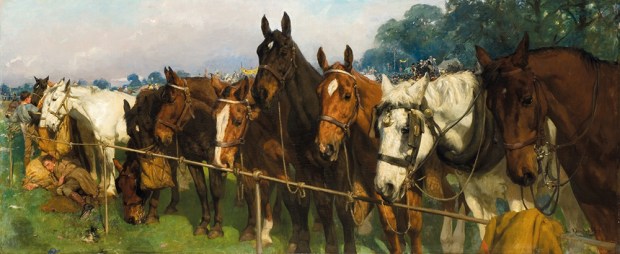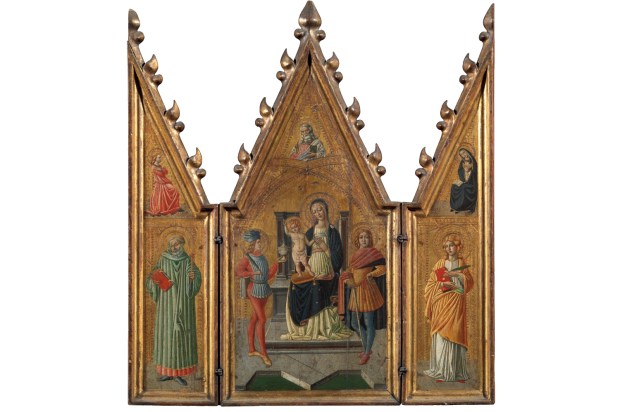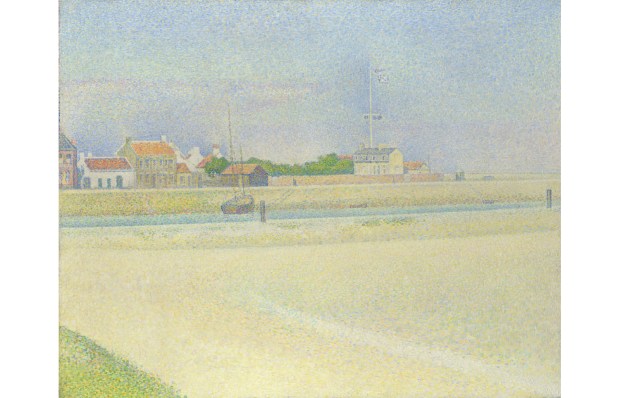In March 1675 the Keeper of His Majesty’s Lodgings at Greenwich received an order for ‘Three pairs of shutters for the three windows in a lower room, at the Queen’s building next to the park (where the Dutch painters work’). Willem van de Velde and his son, also called Willem, would have preferred a studio with north light, but they weren’t complaining. They had been put on a retainer of £100 a year by Charles II – with an additional £50 from James, Duke of York – for the father to draw ‘Draughts of Sea Battles’ and the son to turn ‘said Draughts into Colours’.
It was a step up for a pair of economic migrants who had left their country when the 1672 ‘Year of Disaster’ crashed the Dutch economy and taken up an opportunistic invitation from the British government for enemy aliens with valuable skills – especially maritime – to settle in England on the promise of tax advantages and freedom from press gangs. The Van de Veldes had valuable maritime skills. The son of a Leiden bargemaster, Willem the Elder had built a career in Amsterdam as a ship’s draughtsman specialising in documenting naval actions: embedded with the Dutch fleet, he would scud between warships in his little ‘galliot’ recording the fighting on long sheets of paper while cannons thundered to the right and left of him. He was a buccaneering war reporter and he acted like one, fathering two illegitimate children with different women and conducting a ten-year affair with a third that culminated in a public shouting match between his wife and the cuckolded husband.
In England he became respectable. A friend who ran into him on a return trip to Amsterdam to collect his wife remarked on his ‘very fine clothes’ and ‘fairly well-made wig’. The Van de Veldes had hit the big time. Their first major commission was from James, Duke of York, for a set of tapestries bigging up his achievements as Lord High Admiral following his removal from office by the 1673 Test Act. The subject of the tapestry in the new Van de Velde exhibition at the Queen’s House, Greenwich, was not exactly a victory – ‘The Burning of the Royal James at the Battle of Solebay, 28 May 1672’ shows the Earl of Sandwich’s flagship going up in smoke after a dawn attack by Dutch fireships, with the loss of almost everyone on board including the Earl – but the Van de Veldes made it look heroic. A painted version by Willem the Younger is still more dramatic, but more fascinating historically is a diagram of the action drawn by James with the ships’ names written in by Willem the Elder – a collaboration between former enemies who had witnessed the battle from opposing sides.
Willem’s days as a war reporter were numbered. After a final foray to the Battle of Schooneveld in 1673, he was withdrawn from active service by the king, who didn’t want to lose such a valuable publicist to a cannon shot. Transferred to civilian duties, he commemorated royal progresses and sea crossings: the arrival of Mary of Modena to meet the future James II at Dover in 1673; the departure of William of Orange and Mary Stuart on their honeymoon voyage of 1677 (see below); and Mary’s return to Gravesend in 1689 to join her husband after James’s deposition.
The Van de Veldes worked as a team. The draughtsman father specialised in ‘pen painting’, a technique well suited to intricate rigging and lavish stern decorations that made 17th-century warships look like floating carvings by Grinling Gibbons; the painter son excelled at atmospheric effects. Dutch patrons had appreciated his light airs; the English preferred gales. A Thames waterman took him out sketching skies in all weathers, an activity the Dutchman called ‘going skoying’. The Van de Veldes never seem to have mastered the English language, but they introduced their adoptive country to marine art: Turner claimed that an image of a storm-tossed vessel by Willem the Younger had made him a painter.
The new king, another Dutch Willem, was less impressed by marine art than his Stuart predecessors and did not renew the Van de Veldes’ salary. They moved from Greenwich to Sackville Street, where Willem the Younger’s son Cornelis took over the studio after his father died in 1707 and was buried alongside his grandfather in St James’s Piccadilly. Cornelis inherited the business but not the capital. His father’s biographer Jacob Weyerman relates that soon after his death the artist’s elderly widow, ‘who was as grey as a squirrel in winter and did not have a tooth in her wizened mouth’, fell in love with and married ‘an Irish vagabond, who was as poor and infirm as Job in his misery, but less patient’. The Irishman ‘took to the whores and the horses and soon all the money was gone’, but the artistic legacy lived on.
Got something to add? Join the discussion and comment below.
Get 10 issues for just $10
Subscribe to The Spectator Australia today for the next 10 magazine issues, plus full online access, for just $10.
You might disagree with half of it, but you’ll enjoy reading all of it. Try your first month for free, then just $2 a week for the remainder of your first year.














Comments
Don't miss out
Join the conversation with other Spectator Australia readers. Subscribe to leave a comment.
SUBSCRIBEAlready a subscriber? Log in